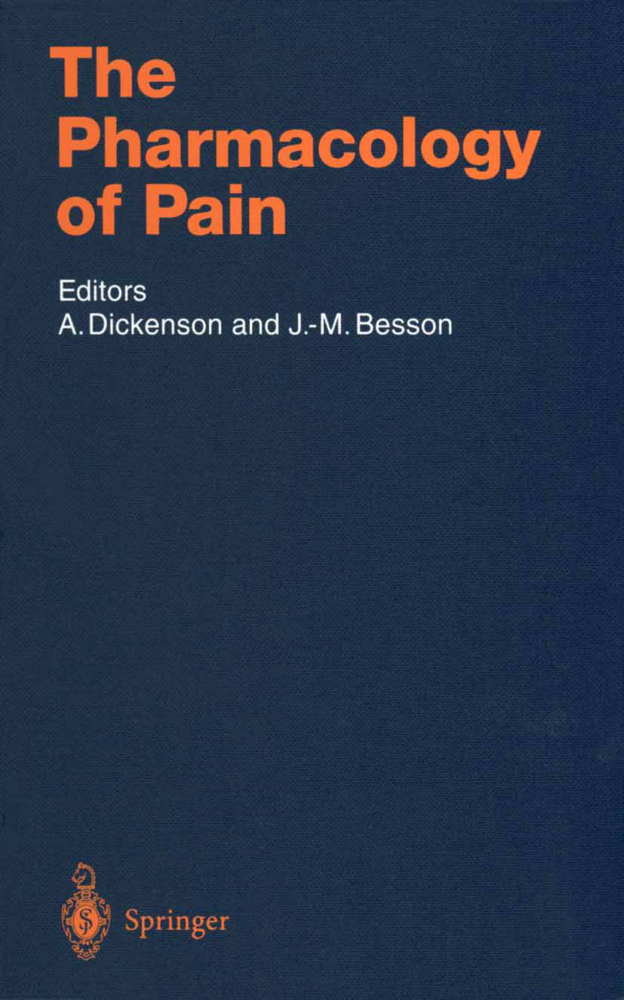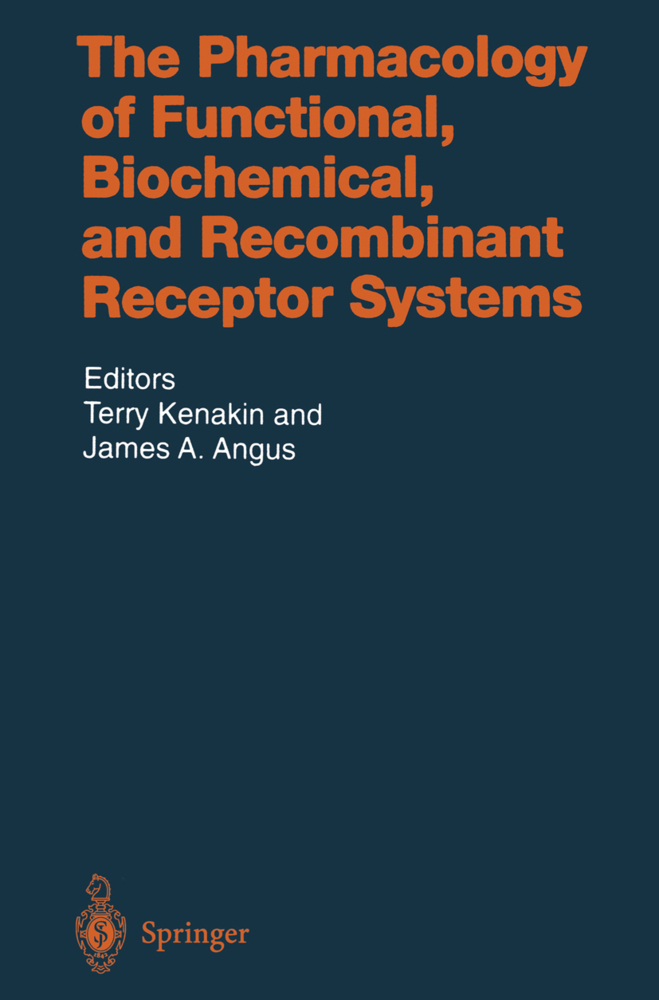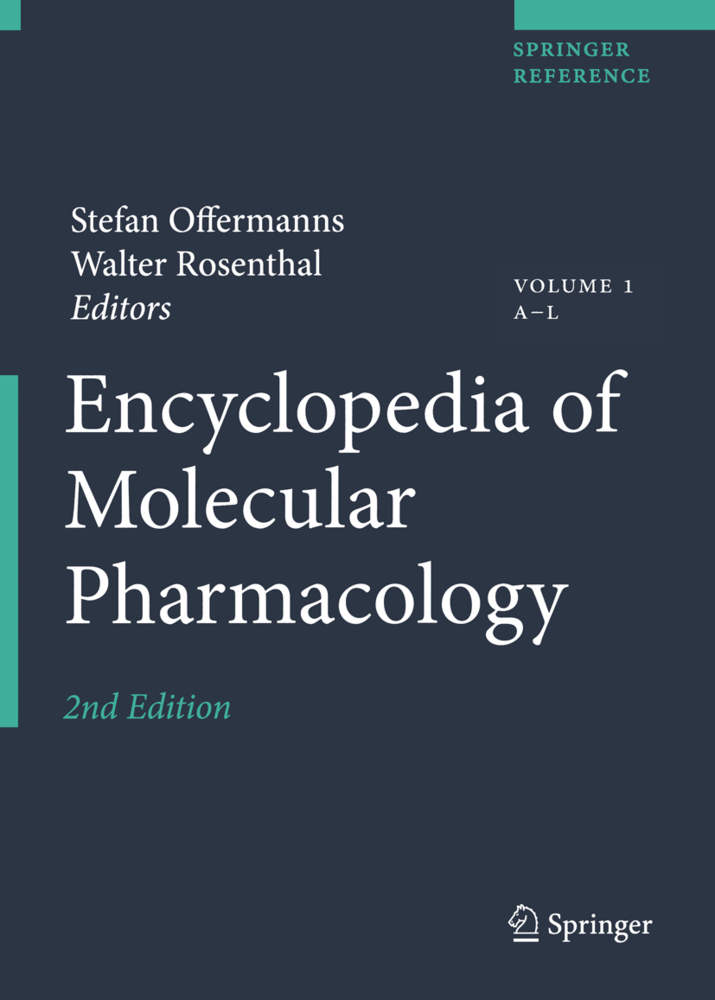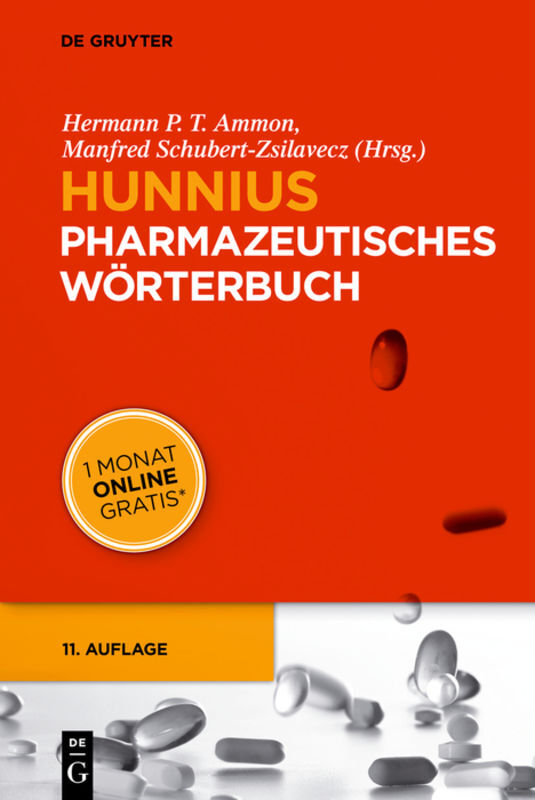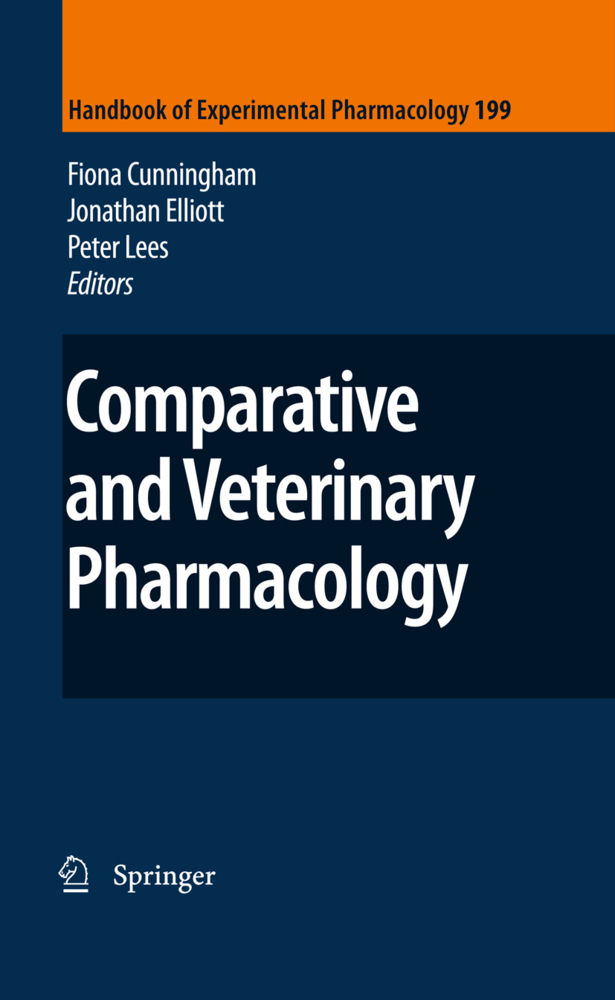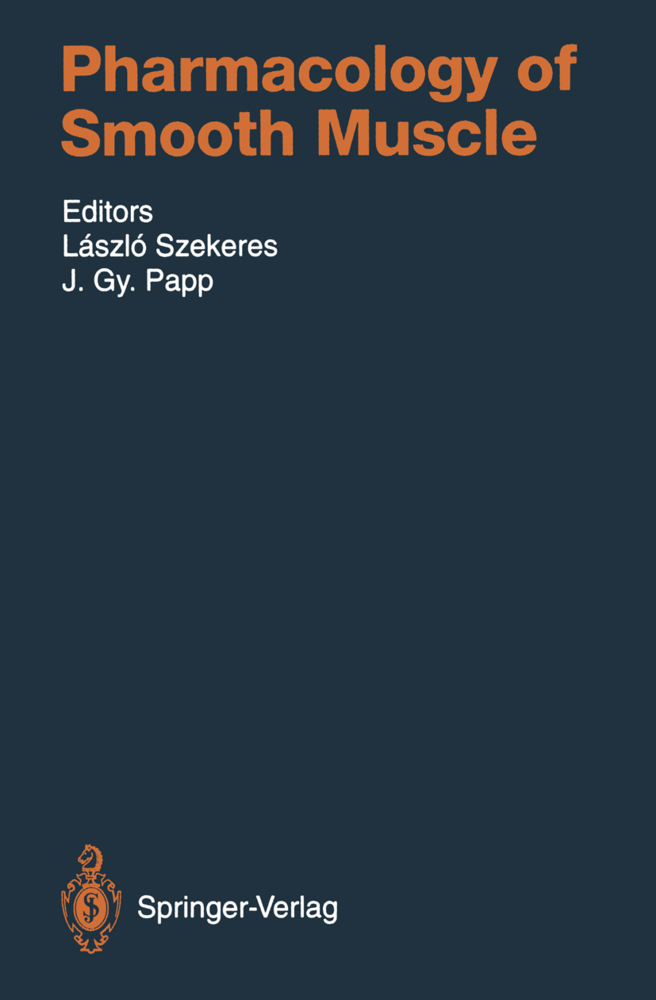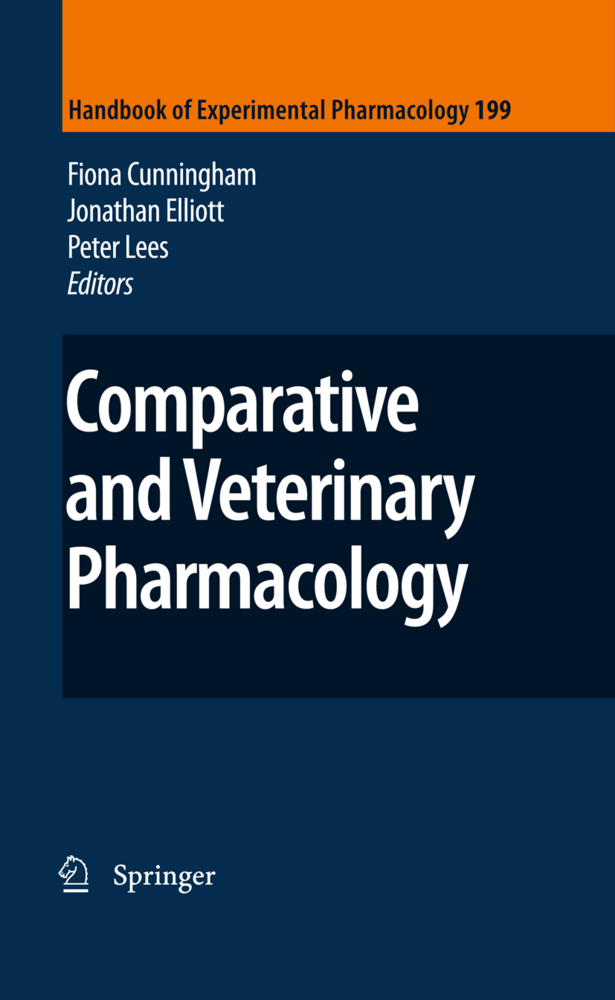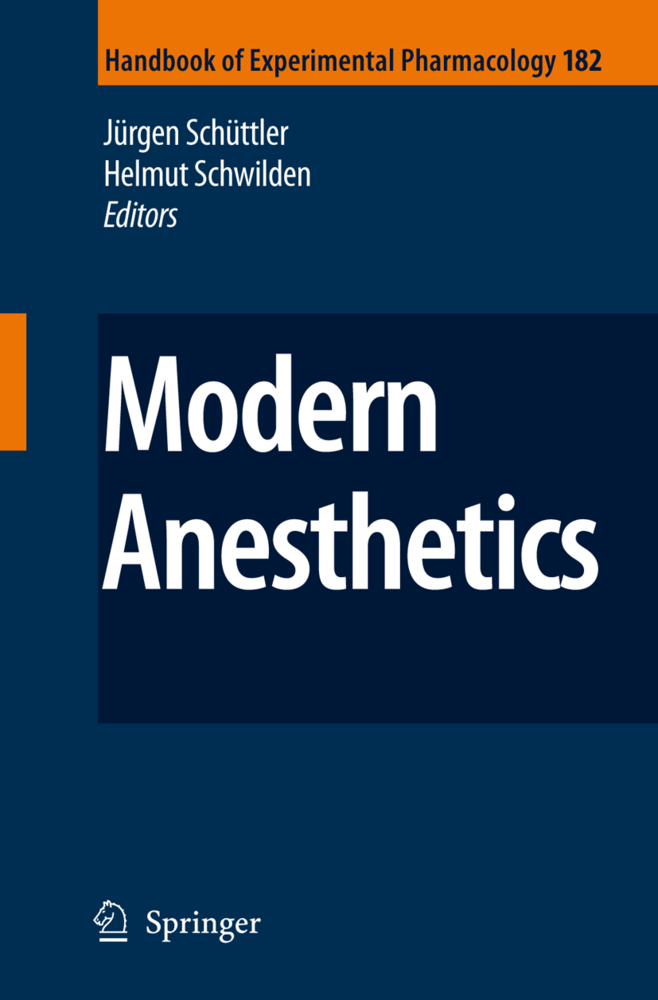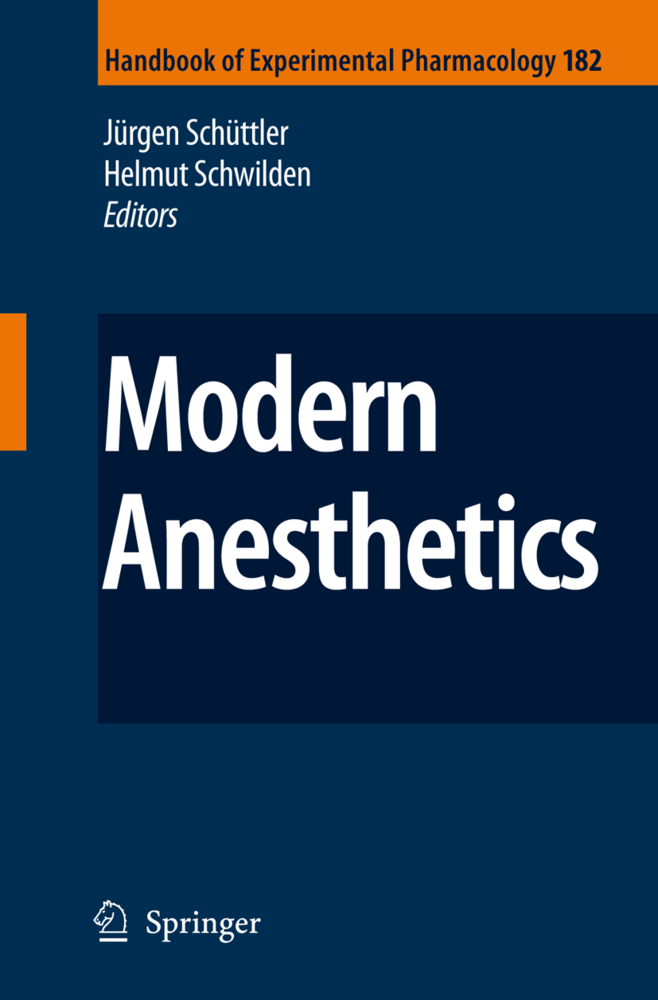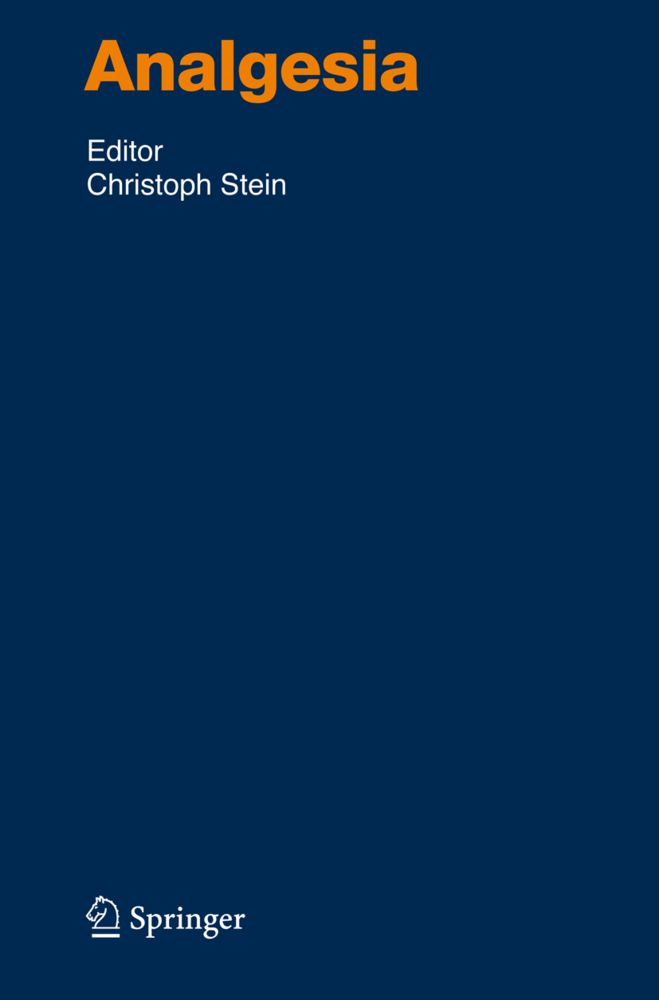The Pharmacology of Pain
The Pharmacology of Pain
Pain is a symptom of many clinical disorders, afflicts a large proportion of the population and is largely treated by pharmacological means. However, the two main classes of drugs used are the opioids and the non-steroidal anti inflammatory drugs, drugs that have a long history. The last decade has seen remarkable advances in our understanding of some of the pharmacological bases of pain and analgesia and this book aims to reflect these rapid changes in our understanding of pain mechanisms. One impetus to these scientific advances has been dialogue and interactions between scientists and clinicians; as a result we now has a number of animal models of clinical pain states, to mimic certain aspects of clinical pathophysiological pain states. Molecular aspects of receptors and the synthesis of tools for probing receptor function have also been rapid growth areas. A number of controlled clinical studies using novel licensed drugs have also resulted from recent research, offering hope to certain patients with severe intractable pain. However, we desperately need the pharmaceutical industry to develop new drugs based on these novel targets for analgesic therapy. This book attempts to provide an overview of the important areas of the pharmacology of pain. This book, although providing an account of the pharmacology of pain transmission and its control based on the underlying anatomical organization and physiological responses, does not attempt to cover these latter two areas.
B. Animal Models and Ethics
C. Factors Affecting Measurements of Nociception
D. Tests of Nociception and Analgesia
E. Comparative Aspects
F. Conclusion
References
2 Peripheral Mediators of Pain
A. Introduction
B. Chemical Signalling in Fine Afferent Neurones
C. Mediators Generated by Tissue Damage and Inflammation
D. Mediators Released from Neurones
E. Inflammatory Mediators from Immune Cells
F. Exogenous Modulators of Sensory Fibre Activity: Vanilloids (Capsaicin Analogues)
G. Ion Channels Activity and Chronic Pain
H. Summary
References
3 Non-steroidal Anti-inflammatory Drugs and Pain
A. Inflammatory Pain and NSAIDs
B. Cyclo-oxygenase
C. Prostaglandins and Inflammatory Pain
D. Nitric Oxide and Nociception
E. Conclusion
References
4 The Sympathetic Nervous System and Pain
A. Introduction
B. The Emergence of the Concept of an Interaction Between the Sympathetic and the Somatosensory System
C. Sympathetic Activation Has a Negligible Effect on Normal Sensory Processing
D. Several Interactions Between the Sympathetic and the Nociceptive Systems Develop After Nerve Injury
E. Can the Sympathetic Nervous System Modulate Pain and Hyperalgesia Under Inflammatory Conditions?
References
5 Excitability Blockers: Anticonvulsants and Low Concentration Local Anesthetics in the Treatment of Chronic Pain
A. Introduction
B. Anticonvulsants in the Treatment of Neuropathic Pain
C. Systemically Administered Local Anesthetics in the Treatment of Neuropathic Pain
D. Mechanisms of Action: Anticonvulsants and Local Anesthetics Suppress Abnormal Primary Afferent Firing
E. Summary
References
6 Tachykinins: Central and Peripheral Effects
A. Introduction
B. Substance P andNK-1 Receptors
C. NK-1 Receptor Antagonists
D. Therapeutic Potential of Drugs Acting at NK-1 Receptors
E. Summary
References
7 Growth Factors and Pain
A. Introduction
B. NGF and Its Receptors
C. NGF as A Mediator of Persistent Pain
D. Mechanisms of NGF-Induced Hyperalgesia
E. Growth Factors and Neuropathic Pain
F. Conclusions
References
8 Mechanisms of Central Hypersensitivity: Excitatory Amino Acid Mechanisms and Their Control
A. Central Hypersensitivity
B. Substrates for Central Hypersensitivity
C. Mechanisms of Central Hypersensitivity
D. NMDA Antagonists and Spinal Hypersensitivity in Persistent Pain States
E. Controlling NMDA Receptor Activation
F. Indirect Influences on NMDA Receptor Activation
G. Conclusions
References
9 Novel Modulators in Nociception
A. Introduction
B. Nitric Oxide
C. Cholecystokinin
D. Galanin
References
10 Pharmacological Studies of Nociceptive Systems Using the C-Fos Immunohistochemical Technique: An Indicator of Noxiously Activated Spinal Neurones
A. Introduction
B. Spinal Expression of c-Fos: Physiological Aspects
C. Pharmacological Aspects
D. Conclusion
References
11 Molecular Aspect of Opioid Receptors
A. Introduction
B. cDNA Cloning of Opioid Receptors
C. cDNA Cloning of an Opioid-like Orphan Receptor
D. Structural Features of the Opioid Receptor Family
E. Opioid Receptor Genes
F. Conclusion: Reconciling Pharmacology and Gene Cloning?
References
12 Opioid Pharmacology of Acute and Chronic Pain
A. Introduction
B. Pharmacological Characterization
C. Physiological Roles
D. Pathological Roles: Opioids and Neuropathic Pain
E. Conclusions
References
13 Opioid Problems, and Morphine Metabolism and Excretion
A. Clinical Aspects
B. Morphine andMetabolites
C. Conclusions
References
14 Inhibitory Neurotransmitters and Nociception: Role of GABA and Glycine
A. Introduction
B. GABA
C. Glycine
D. Summary
References
15 The Role of Descending Noradrenergic and Serotoninergic Pathways in the Modulation of Nociception: Focus on Receptor Multiplicity
A. General Introduction
B. Control of Sympathetic and Motor Function at the Segmental Level: Relevance to Pain and Its Modulation
C. Noradrenaline, Adrenaline and Adrenergic Receptors
D. Serotonin and Serotonin Receptors
E. General Discussion and Conclusions
References
16 Neonatal Pharmacology of Pain
A. Introduction
B. Neonatal Pharmacology of Excitatory Pathways Involved in Pain
C. Neonatal Pharmacology of Inhibitory Pathways Involved in Pain
D. Concluding Comments
References.
1 Animal Models of Analgesia
A. IntroductionB. Animal Models and Ethics
C. Factors Affecting Measurements of Nociception
D. Tests of Nociception and Analgesia
E. Comparative Aspects
F. Conclusion
References
2 Peripheral Mediators of Pain
A. Introduction
B. Chemical Signalling in Fine Afferent Neurones
C. Mediators Generated by Tissue Damage and Inflammation
D. Mediators Released from Neurones
E. Inflammatory Mediators from Immune Cells
F. Exogenous Modulators of Sensory Fibre Activity: Vanilloids (Capsaicin Analogues)
G. Ion Channels Activity and Chronic Pain
H. Summary
References
3 Non-steroidal Anti-inflammatory Drugs and Pain
A. Inflammatory Pain and NSAIDs
B. Cyclo-oxygenase
C. Prostaglandins and Inflammatory Pain
D. Nitric Oxide and Nociception
E. Conclusion
References
4 The Sympathetic Nervous System and Pain
A. Introduction
B. The Emergence of the Concept of an Interaction Between the Sympathetic and the Somatosensory System
C. Sympathetic Activation Has a Negligible Effect on Normal Sensory Processing
D. Several Interactions Between the Sympathetic and the Nociceptive Systems Develop After Nerve Injury
E. Can the Sympathetic Nervous System Modulate Pain and Hyperalgesia Under Inflammatory Conditions?
References
5 Excitability Blockers: Anticonvulsants and Low Concentration Local Anesthetics in the Treatment of Chronic Pain
A. Introduction
B. Anticonvulsants in the Treatment of Neuropathic Pain
C. Systemically Administered Local Anesthetics in the Treatment of Neuropathic Pain
D. Mechanisms of Action: Anticonvulsants and Local Anesthetics Suppress Abnormal Primary Afferent Firing
E. Summary
References
6 Tachykinins: Central and Peripheral Effects
A. Introduction
B. Substance P andNK-1 Receptors
C. NK-1 Receptor Antagonists
D. Therapeutic Potential of Drugs Acting at NK-1 Receptors
E. Summary
References
7 Growth Factors and Pain
A. Introduction
B. NGF and Its Receptors
C. NGF as A Mediator of Persistent Pain
D. Mechanisms of NGF-Induced Hyperalgesia
E. Growth Factors and Neuropathic Pain
F. Conclusions
References
8 Mechanisms of Central Hypersensitivity: Excitatory Amino Acid Mechanisms and Their Control
A. Central Hypersensitivity
B. Substrates for Central Hypersensitivity
C. Mechanisms of Central Hypersensitivity
D. NMDA Antagonists and Spinal Hypersensitivity in Persistent Pain States
E. Controlling NMDA Receptor Activation
F. Indirect Influences on NMDA Receptor Activation
G. Conclusions
References
9 Novel Modulators in Nociception
A. Introduction
B. Nitric Oxide
C. Cholecystokinin
D. Galanin
References
10 Pharmacological Studies of Nociceptive Systems Using the C-Fos Immunohistochemical Technique: An Indicator of Noxiously Activated Spinal Neurones
A. Introduction
B. Spinal Expression of c-Fos: Physiological Aspects
C. Pharmacological Aspects
D. Conclusion
References
11 Molecular Aspect of Opioid Receptors
A. Introduction
B. cDNA Cloning of Opioid Receptors
C. cDNA Cloning of an Opioid-like Orphan Receptor
D. Structural Features of the Opioid Receptor Family
E. Opioid Receptor Genes
F. Conclusion: Reconciling Pharmacology and Gene Cloning?
References
12 Opioid Pharmacology of Acute and Chronic Pain
A. Introduction
B. Pharmacological Characterization
C. Physiological Roles
D. Pathological Roles: Opioids and Neuropathic Pain
E. Conclusions
References
13 Opioid Problems, and Morphine Metabolism and Excretion
A. Clinical Aspects
B. Morphine andMetabolites
C. Conclusions
References
14 Inhibitory Neurotransmitters and Nociception: Role of GABA and Glycine
A. Introduction
B. GABA
C. Glycine
D. Summary
References
15 The Role of Descending Noradrenergic and Serotoninergic Pathways in the Modulation of Nociception: Focus on Receptor Multiplicity
A. General Introduction
B. Control of Sympathetic and Motor Function at the Segmental Level: Relevance to Pain and Its Modulation
C. Noradrenaline, Adrenaline and Adrenergic Receptors
D. Serotonin and Serotonin Receptors
E. General Discussion and Conclusions
References
16 Neonatal Pharmacology of Pain
A. Introduction
B. Neonatal Pharmacology of Excitatory Pathways Involved in Pain
C. Neonatal Pharmacology of Inhibitory Pathways Involved in Pain
D. Concluding Comments
References.
| ISBN | 978-3-642-64550-1 |
|---|---|
| Artikelnummer | 9783642645501 |
| Medientyp | Buch |
| Copyrightjahr | 2011 |
| Verlag | Springer, Berlin |
| Umfang | XXII, 479 Seiten |
| Abbildungen | XXII, 479 p. |
| Sprache | Englisch |

